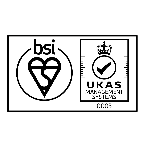
Guidance on care and use of load measuring devices
Obligations around the use and care of load cells and other measuring devices take more than an up to date Calibration Certificate. A newly published LEEA Guidance Note explains why, writes Ben Dobbs, Head of Technical Services at LEEA.
In our work auditing users of lifting equipment, the Lifting Equipment Engineers Association (LEEA) has found a widespread misunderstanding about the legal obligations around the use and care of load cells and other measuring devices. In a surprising number of firms, including LEEA members, it seems to be believed that all that is required is an up to date Calibration Certificate. This is not the case, and the LEEA’s newly published Guidance Note, ‘LEEA 085 Guidance to the use and care of load measuring devices’ explains why.
As should be universally known, lifting equipment is covered by both UK Regulations and EU Directives detailing among other things the nature and frequency of inspections and examinations that the Duty Holder is required by law to ensure are carried out and documented. Where load measuring devices are integral to the lifting apparatus there shouldn’t be a problem – obviously they will be inspected or thoroughly examined along with the rest of the apparatus.
But in many cases the load cell or equivalent isn’t part of the apparatus itself – it is, to quote the regulations, “a component or equipment not attached to the lifting machinery, allowing the load to be held, which is placed between the machinery and the load or on the load itself…”, which is the definition of a ‘lifting accessory’, and lifting accessories are also subject to regulations on inspection and examination. Note that this applies whether the device is used for live load monitoring, or for loose load testing of equipment, both of which involve actual lifting operations. Devices used purely for the tensile or compressive testing of lifting equipment aren’t technically classed as lifting equipment, but are still covered by the Work Equipment Regulations where they apply and rules around guarding, safety devices, risk assessments and the like.
The range of devices involved is quite wide. There are both tensile and compressive load cells, load pins and shackles all of which will typically give an electronic read-out; hydraulic systems; and simpler mechanical spring scales or ‘load clocks’ (which aren’t considered further in the guidance).
All these devices must observe regulations both for calibration (are they reading correctly and thus not allowing a risk to arise in the rest of the lifting system) and for inspection and thorough examination (is the load measuring device safe in itself).
The Guidance summarises the calibration requirements using testing machines that themselves are calibrated to BS EN ISO 376, following BS EN ISO 7500-1 and the testing company’s own ISO 9001 verified procedures (for which the testing company will have comprehensive certification). For hydraulic pressure gauges, BS EN 837-1:1998
is the standard. In both cases suppliers of devices are required to furnish the relevant certification along with the other required documents, and recalibration is required every twelve months.
The requirements for inspection and thorough examination are set by national legislation and/or nationally adopted standards, in this case LEEA recommends no longer than six months, although depending on the nature of usage a less frequent scheme is acceptable, but not more than 12 months. Inspection/examination should be in accordance with manufacturer’s guidance covering all the relevant points that should be checked – visually, dimensionally, or otherwise. Manufacturers are also obliged to provide Instructions for use, specific to the type and model. These should include not just how the product is intended to be used, but also information on ‘reasonably foreseeable misuse’, as well as information what maintenance can be carried out by the operator/duty holder, and what repairs require return to the supplier. Needless to say, all this has to be documented and retailed.
This probably sounds more complex than it really is: LEEA 085 aims to provide a simple guide. To have to inspect, examine and, perhaps separately, recalibrate, may be a tad irksome but it is the law – and it protects both equipment and life.



